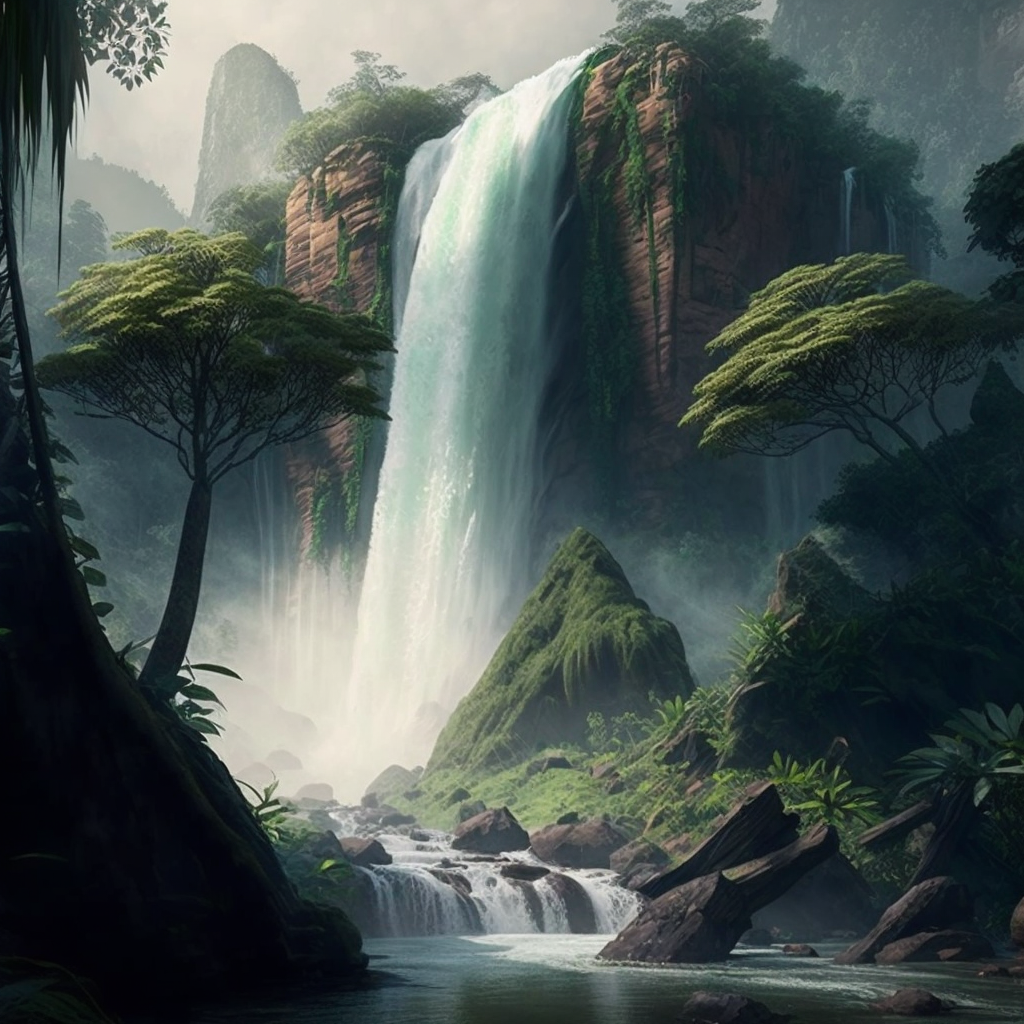Natural wonders are the most spectacular places on earth, providing awe-inspiring sights, sounds, and experiences that make us appreciate the beauty of our planet. From the Amazon rainforest to the Grand Canyon, these natural wonders are reminders of the incredible power of nature. From the breathtaking glaciers of Iceland to the majestic mountains of the Himalayas, here’s a look at some of the most stunning natural wonders around the world.
Northern Hemisphere Natural Wonders
- Victoria Falls (Africa)
Victoria Falls is one of the most spectacular natural wonders in the world, located on the Zambezi River along the border of Zambia and Zimbabwe in Africa. It is considered to be the largest single curtain of falling water in the world, with a width of nearly two kilometers and a height of 108 meters.
The falls are made up of five different sections, each with its own unique beauty. The Main Falls is the largest and most impressive, with a powerful curtain of water that can be seen from miles away. Then there’s the Eastern Cataract, which is a series of small cascades and rapids. The Western Cataract is a powerful series of falls and chutes, while the Rainbow Falls is a set of smaller waterfalls. Finally, the Devil’s Cataract is the most powerful of the five, with a powerful roar and a huge curtain of water.
- Grand Canyon (United States)
The Grand Canyon, located in Arizona, United States, is one of the most spectacular natural wonders in the world. The Grand Canyon is about 277 miles long and up to 18 miles wide at its widest point. The deepest part of the Grand Canyon is located in the western portion of the park, near an area known as the Inner Gorge. At its deepest point, the Grand Canyon plunges 6,000 feet (1.8 kilometers) below the rim.
The Grand Canyon is a result of millions of years of erosion of the Colorado River and its tributaries, creating a massive gorge with stunning views. The canyon’s steep walls of colorful rock formations, carved by the river over time, are awe-inspiring. The layers of rock, which range from vibrant reds and oranges to deep purples and blues, tell a story of the Earth’s past.
- Aurora Borealis (Northern Europe)
The Aurora Borealis, or ‘Northern Lights’ as it is more commonly known, is one of the most spectacular natural wonders around the world. Caused by electrically charged particles from the sun entering the Earth’s atmosphere, the vibrant colors of the Northern Lights create a magical and mesmerizing display of lights. The Aurora Borealis can be seen in the Northern Hemisphere, in countries such as Norway, Sweden, Finland, Iceland, Greenland, Canada and Alaska. The lights can be seen any time of the year, although they are typically most visible during the winter months. It is best to observe the Aurora Borealis on a clear night, away from any light pollution.
Southern Hemisphere Natural Wonders
- Iguazu Falls (South America)
Iguazu Falls, located in South America along the border of Brazil and Argentina, is one of the most spectacular natural wonders in the world. It is made up of 275 individual waterfalls, ranging in height from 60 to 82 meters (nearly 270 feet). It is one of the largest waterfalls in the world, and spans a distance of nearly 2.7 kilometers (1.7 miles).
The falls were formed millions of years ago, when a volcanic eruption carved out a deep canyon in the area. The falls are fed by the Iguazu River, which flows down from the mountains of Brazil. The water flows over the edge of the cliffs, creating an impressive and powerful display of cascading water.
- Great Barrier Reef (Australia)
The Great Barrier Reef, located off the coast of Australia, is one of the most spectacular natural wonders in the world. This vast coral reef system stretches for over 1,400 miles and is home to thousands of species of marine life. From colorful fish, to sea turtles, to giant clams, the reef is teeming with life.
The reef is made up of over 3,000 individual reefs and 900 islands, making it the largest coral reef system in the world. Its stunning beauty is best seen from the air, where its vibrant colors can be seen for miles. Its waters are also home to some of the world’s most diverse ecosystems, including mangroves, seagrass beds, and coral reefs.
- Angel Falls (Venezuela)
Angel Falls is a majestic waterfall located in the Canaima National Park in Venezuela. It is the tallest uninterrupted waterfall in the world, with a height of 3,212 feet (979 meters). The mighty waters of the Angel Falls cascade down from the Auyantepui mountain, located in the Guayana Highlands in southeastern Venezuela. The Angel Falls are named after American aviator Jimmy Angel, who first spotted the breathtaking waterfall while searching for gold in the 1930s.
The awesome power of Angel Falls is truly a sight to behold. The thunderous roar of the falls can be heard from miles away and is a favorite among adventurous travelers. Visitors to Angel Falls can take a boat trip to the bottom of the falls, where they can experience the full force and beauty of the falls up close. The mist created by the waterfall rains down on visitors, creating a truly unique and memorable experience.
From the majestic Aurora Borealis to the breathtaking Victoria Falls, there are countless natural wonders around the world that are worth seeing. Each of these amazing places is unique and awe-inspiring in its own way. From the vastness of the Grand Canyon to the beauty of the Matterhorn, these natural wonders are amazing in their own right. Whether you travel to the Northern Lights or take a trip to the Grand Canyon, these natural wonders offer an unforgettable experience that will stay with you for a lifetime. You can also read about the most amazing places on Earth in the article «Exotic Locations You Must Visit at Least Once in Your Life».
The Grand Canyon is about 277 miles long and up to 18 miles wide at its widest point. The deepest part of the Grand Canyon is located in the western portion of the park, near an area known as the Inner Gorge. At its deepest point, the Grand Canyon plunges 6,000 feet (1.8 kilometers) below the rim.
The Great Barrier Reef, located off the coast of Australia, is one of the most spectacular natural wonders in the world. The reef is made up of over 3,000 individual reefs and 900 islands, making it the largest coral reef system in the world. Its stunning beauty is best seen from the air, where its vibrant colors can be seen for miles.
Victoria Falls is one of the most spectacular natural wonders in the world, located on the Zambezi River along the border of Zambia and Zimbabwe in Africa.

